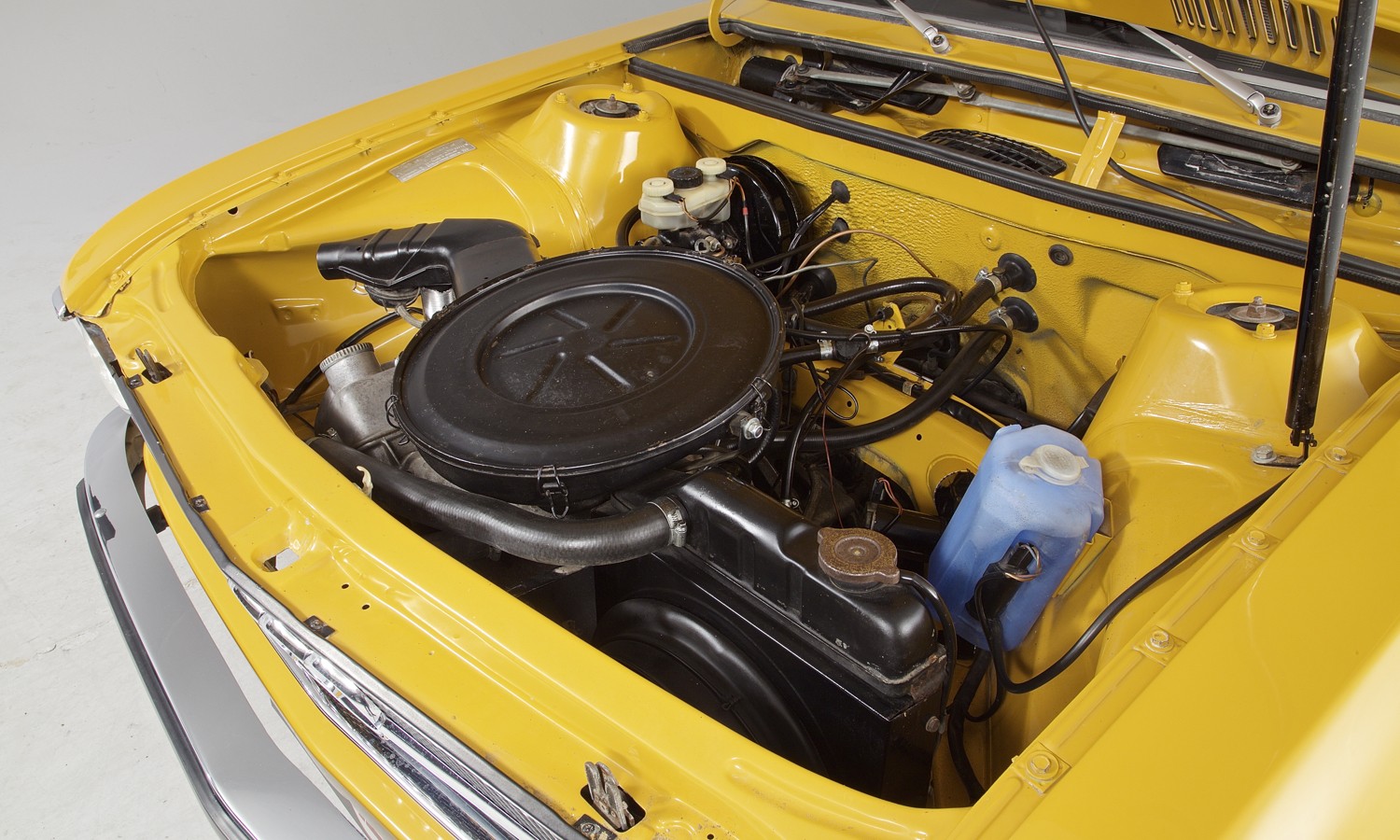In drag racing, a transbrake is a mechanism that selectively places the transmission in first and reverse gears simultaneously, effectively holding the race car stationary as if the foot brake was applied. It is specifically used on automatic transmissions that employ a torque converter, where it is beneficial to build up hydraulic pressure before the vehicle is launched. The transbrake is activated by the driver by applying electric current to a solenoid at the transmission. With the transbrake engaged (transmission locked), the enginethrottle can be increased to any position (opening) in preparation for launch without the race driver worrying about the car creeping forward. Milliseconds before the green light illuminates on the Tree the transbrake is released (by the driver releasing an electrical switch or by a delay box 'timing out' originally triggered by the driver releasing an electrical switch) and the car launches forward, its engine already in the higher power band and the transmission already in low gear.
- A transmission brake allows your vehicle to launch off the line with more 'hit' to the suspension and tires.
- The transbrake is activated by the driver by applying electric current to a solenoid at the transmission. With the transbrake engaged (transmission locked), the engine throttle can be increased to any position (opening) in preparation for launch without the race driver worrying about the car creeping forward.
Once installed, the TCI® GM 4L80E Transbrake Valve Body modifies your transmission into afull manual shift, reverse pattern unit with an impressive Pro Tree transbrake feature. It alsoretains torque converter clutch engagement in overdrive and still allows lockup in lower enginerpm.
References[edit]
Transmission Brake System
The trans brake revolutionized drag racing automatic transmission equipped vehicles. A transmission brake allows your vehicle to launch off the line with more 'hit' to the suspension and tires. If you want the hard hitting initial move off the starting line like what you get by dumping the clutch on a manual transmission, but with the ease of use of an automatic transmission then an automatic transmission brake valve body is what you need. If you would like a further definition of what a transbrake is and how it works, please click here.
If you are looking for a manual shift valve body but do not want a trans brake, please view our manual valve body products here.

Transmission Brake Operation
JW Performance Transmissions, Inc. builds the best quality transbrake valve bodies available. We offer their entire line of dependable, hard hitting transmission brakes. When using electronics like a delay box, you make the best use of them by using the delay box with a trans brake.
JW Performance Transmission Trans Brake Applications
| Automatic Transmission Brand and Model | Transbrake Type | Part Number | |
|---|---|---|---|
GM Powerglide TransbrakeGM = Buick, Chevy, Chevrolet, GM, General Motors, Oldsmobile, Pontiac OEM model power glide transmissions, JW Performance and other aftermarket GM based transmissions | PRO TREE Forward pattern quickest launches .400 tree | jw 10284 | |
| Bracket Race Forward pattern .500 tree | jw 10280bf | ||
| Bracket Race Reverse pattern .500 tree | jw 10281br | ||
GM Turbo 350 TH350 Trans brake | Reverse pattern | jw 20550br | |
GM Turbo 400 TH400 Transbrake | Reverse pattern | jw 30550br | |
| Reverse pattern aluminum | jw 30551br | ||
| Reverse pattern | jw 40550br | ||
| Reverse pattern | jw 60550br | ||
| Reverse pattern | jw 50550br | ||
| Reverse pattern | jw 55550br |

Q: What is a trans brake? How does a transbrake work?
A) An automatic transmission transbrake is a modified or aftermarket valve body which puts the trans into first gear, and reverse gear at the same time. This is done in part by applying electrical voltage and current to the valve body assembly. As long as power is supplied to the valve body the vehicle will not move. This allows the engine to be brought up to a higher rpm than what is possible when 'foot brake' racing. When the brake is engaged, there is no torque being applied to the driveshaft, so the suspension is also in an unloaded state. When current is removed from the brake, the reverse component of the trans is released, and torque is applied to the driveshaft very abruptly. This 'hits' the tires harder, more like what a manual transmission car does when the clutch is released. Since the transbrake is controlled by applying an electrical current, it is also the preferred method of controlling when the car launches when using delay boxes and other modern drag race electronics.
A transmission brake can be used in a street vehicle, but is most commonly used for serious drag racing.
